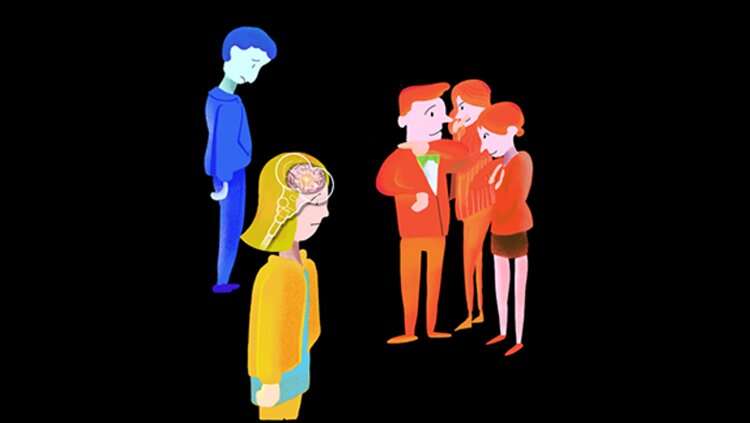Targeted brain stimulation dulls social pain

Pairing brain stimulation with an emotion management technique blunts negative emotions, according to research recently published in JNeurosci. The combination may improve emotional regulation in people with psychiatric disorders.
Managing your emotions is a key component to navigating difficult situations. People with psychiatric disorders like PTSD and depression struggle to do this. The brain regulates emotions through the dorsolateral (DLPFC) and ventrolateral prefrontal cortex (VLPFC). The two regions work by shifting attention and reinterpreting situations, respectively. Harnessing the independent, separate roles of these regions may offer a novel treatment for the emotional symptoms of psychiatric disorders.
Zhao et al. enhanced the brain activity of healthy adults using transcranial magnetic stimulation while they viewed images of social pain. The participants rated their negative emotions just after viewing the image, after distracting themselves, or after coming up with a positive interpretation of the image (reappraisal). Stimulating either area of the prefrontal cortex decreased negative emotions, with effects lasting up to an hour.
Pairing DLPFC stimulation with the distraction strategy and VLPFC stimulation with the reappraisal strategy decreased negative emotions even more. This suggests combining targeted brain stimulation with the appropriate regulation strategy could improve emotional responses in psychiatric disorders.
More information: The VLPFC vs. the DLPFC in Down-Regulating Social Pain Using Reappraisal and Distraction Strategies, JNeurosci (2020). DOI: 10.1523/JNEUROSCI.1906-20.2020


















